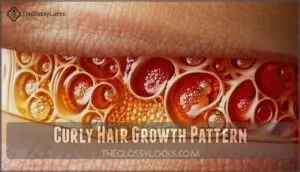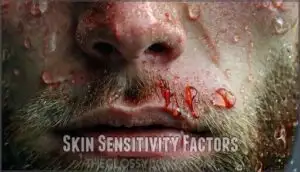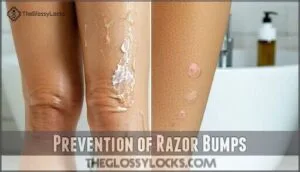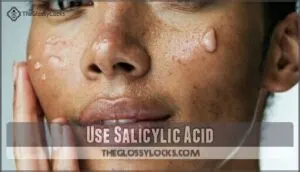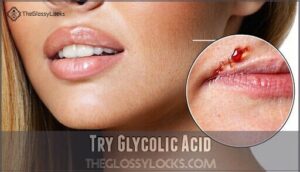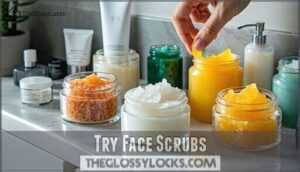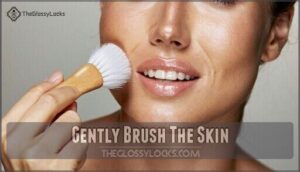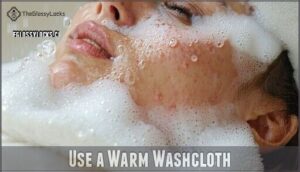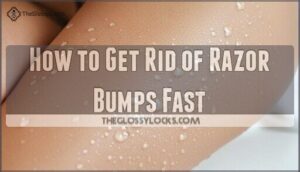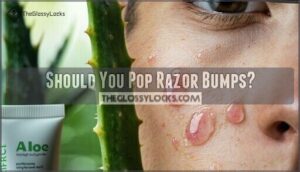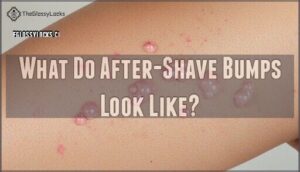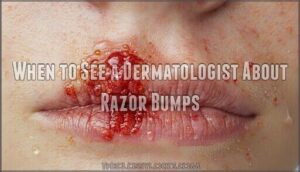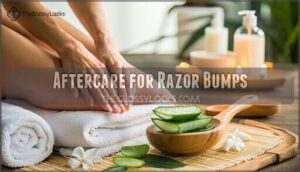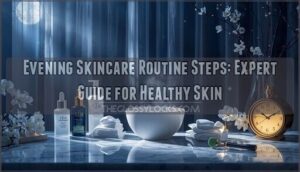This site is supported by our readers. We may earn a commission, at no cost to you, if you purchase through links.
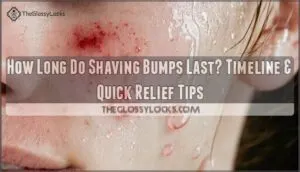 Shaving bumps typically last 2-7 days, though they can persist for several weeks if you keep irritating the area.
Shaving bumps typically last 2-7 days, though they can persist for several weeks if you keep irritating the area.
The timeline depends on your skin’s healing ability and whether you give those angry bumps a break from your razor. Most people see improvement within a few days when they stop shaving over the affected area and let their skin recover.
However, if you’ve got particularly sensitive skin or continue your regular shaving routine, you’re looking at a longer healing process that could stretch into weeks. The key is patience – your skin needs time to calm down and reset.
Some folks notice their bumps clearing faster with gentle care, while others find themselves waiting it out longer than they’d like. The healing process can be influenced by how well you take care of your skin, and giving it a break from shaving can significantly impact the healing ability of your skin, allowing it to recover and eventually leading to a smoother skin surface with fewer bumps.
Table Of Contents
- Key Takeaways
- How Long Do Shaving Bumps Last?
- Definition of Razor Bumps
- Causes of Razor Bumps
- Prevention of Razor Bumps
- Treating Razor Bumps at Home
- How to Get Rid of Razor Bumps Fast
- Should You Pop Razor Bumps?
- What Do After-Shave Bumps Look Like?
- When to See a Dermatologist About Razor Bumps
- Aftercare for Razor Bumps
- Frequently Asked Questions (FAQs)
- How long does it take for razor bumps to go away?
- How long do razor bumps last after a period?
- How long does it take for a razor bump to appear?
- How long does Razor Burn Last after shaving?
- Can you get razor bumps if you shave?
- How long does a shave last?
- Is it possible to prevent razor bumps when shaving?
- What causes razor bumps?
- What are the risk factors for razor bumps?
- How do doctors diagnose razor burns?
- Conclusion
Key Takeaways
- You’ll see improvement within 2-7 days if you stop shaving the affected area and let your skin heal naturally
- Curly or coarse hair extends healing time – expect longer recovery periods due to a higher risk of hairs growing back into your skin
- Don’t pop razor bumps as this increases the infection risk, causes scarring, and actually delays the healing process by 1-2 weeks
- See a dermatologist if bumps persist beyond 3 weeks or show signs of infection like pus, spreading redness, or severe pain
How Long Do Shaving Bumps Last?
Shaving bumps typically last two to three weeks, though bump duration factors like your hair type and shaving frequency play vital roles.
If you’ve got curly or coarse hair, expect longer healing times due to higher scarring potential. Discomfort levels vary too—some bumps fade within days while others linger stubbornly.
Razor bumps from frequent shaving create cycles of irritation, extending shaving bumps duration.
The good news? Proper shaving bumps treatment and shaving bumps remedy approaches can substantially speed recovery.
Stop shaving the affected area, apply warm compresses, and use gentle exfoliation to encourage healing.
Definition of Razor Bumps
Razor bumps are those frustrating red, raised bumps that appear after shaving. These aren’t regular pimples but rather ingrown hairs that develop when hair grows back into your skin instead of outward.
Medically known as pseudofolliculitis barbae, these bumps occur when freshly cut hair curls back and penetrates the skin surface. This creates inflammation around the hair follicle, resulting in tender, sometimes pus-filled bumps.
Razor bumps differ from razor burn in several key ways:
- Timing: Bumps appear days to weeks after shaving, while burn shows up immediately
- Duration: Bumps can last 2-3 weeks versus burn’s 2-3 days
- Appearance: Bumps are raised and may contain pus; burn appears as flat redness
- Cause: Bumps result from ingrown hairs; burn comes from shaving friction
- Recurrence: Bumps often return with each shave cycle
Folliculitis can accompany razor bumps when hair follicles become infected. Using a sharp razor can help prevent razor bumps. Understanding these bump characteristics helps you distinguish between normal post-shave irritation and more persistent shaving bumps that need targeted treatment.
Causes of Razor Bumps
Understanding what causes razor bumps helps you prevent them from happening in the first place.
Your hair type, shaving habits, and skin sensitivity all play important roles in whether you’ll develop these irritating bumps after shaving, which can be considered complete concepts related to razor bumps.
Curly Hair Growth Pattern
Hair Curl Genetics make your follicles produce curved hair shafts that naturally bend back toward skin.
This Follicle Shape Impact creates razor bumps when curly hair grows at awkward angles.
Your Growth Directionality isn’t straight up—it curves, causing ingrown hairs.
Breakage Point Vulnerability increases when hair meets resistance from skin surface.
Moisture Retention Needs affect how easily hair penetrates skin, while your unique hair growth pattern determines shaving bumps frequency and severity.
Improper Shaving Technique
Your technique matters more than you might think. Blade dullness creates the perfect storm for razor bumps by tugging at hairs instead of cutting cleanly. When you shave against the grain or practice dry shaving, you’re setting yourself up for trouble.
Improper shaving techniques that cause razor bumps include:
- Using dull razors that pull rather than slice hair
- Shaving direction against hair growth patterns
- Skin stretching too tightly during the process
- Poor razor hygiene allowing bacteria buildup
These shaving techniques force hair to grow back improperly, creating those painful shaving rash bumps you want to avoid.
Skin Sensitivity Factors
Several factors determine your skin sensitivity to razor bumps and shaving bumps.
Skin type matters most – sensitive skin reacts more strongly to shaving, increasing skin irritation.
Product ingredients can trigger allergic reactions, especially fragrances and harsh chemicals.
Hydration levels affect skin resilience, while exfoliation frequency impacts dead skin buildup.
Daily shaving heightens sensitivity compared to occasional grooming, making razor bumps more likely in already vulnerable skin.
Softening hair helps in preventing razor burn.
Prevention of Razor Bumps
Take control of your shaving routine to prevent razor bumps before they start. Your shaving cream choice matters most – select moisturizing formulas designed for sensitive skin. Switch your razor type to single-blade or electric options that reduce skin trauma. Keep hair length at least 0.5 millimeters to prevent ingrown hairs from developing.
You can explore different brands of shaving cream to find the best fit. Exfoliation methods like gentle scrubs remove dead skin cells that trap hairs beneath the surface. Apply warm washcloths before shaving to soften hair and open pores.
Always shave with the grain, never against it, and avoid pulling skin tight. Your moisturizing routine should include fragrance-free products applied immediately after shaving. Replace razor blades every 5-7 uses to maintain sharp cuts.
These shaving tips for hair removal create effective razor bumps prevention by addressing shaving bumps causes at their source, helping you avoid preventing razor burn complications.
Treating Razor Bumps at Home
You don’t have to put up with razor bumps at home, because several simple steps can help them heal faster.
By using ingredients like salicylic acid and gentle washes, you can calm irritation and keep your skin clear.
Use Salicylic Acid
Salicylic acid penetrates deep into hair follicles, dissolving the buildup that traps hairs beneath your skin. This beta-hydroxy acid reduces inflammation while gently exfoliating dead cells that contribute to razor bumps.
Salicylic acid is effective because it helps clear clogged pores effectively.
Here’s how to use salicylic acid effectively:
- Start with lower concentrations (0.5-2%) to test your skin’s tolerance
- Apply once daily after shaving, increasing frequency as your skin adapts
- Choose the right product form – cleansers for daily use, spot treatments for active bumps
- Follow with moisturizer to prevent dryness and maintain your skin barrier
Products containing salicylic acid work best when used consistently rather than sporadically.
Try Glycolic Acid
Glycolic acid offers another powerful weapon against razor bumps.
This alpha-hydroxy acid works by dissolving the bonds between dead skin cells, preventing hairs from getting trapped beneath the surface.
Here’s what makes glycolic acid effective:
- Exfoliates skin surface – removes dead cells that can trap growing hairs
- Reduces inflammation – calms redness and swelling from existing bumps
- Improves skin texture – promotes smoother regrowth patterns over time
Those with razor bumps may want to explore products for this issue.
Start with 2-5% concentration products to test your skin’s tolerance before moving to stronger formulations.
Try Face Scrubs
Physical exfoliation with face scrubs helps lift trapped hairs and removes dead skin cells that contribute to razor bumps.
Choose gentle scrubs with fine particles or natural ingredients to avoid irritating already sensitive skin.
| Scrub Type | Best For | Application Frequency |
|---|---|---|
| Sugar/oatmeal scrubs | Sensitive skin scrubs | 2-3 times weekly |
| Chemical exfoliants (AHA) | All skin types | 1-2 times weekly |
| DIY honey-brown sugar | Budget-friendly option | 2 times weekly |
Use circular motions when applying scrubs, focusing on bump-prone areas.
This exfoliation frequency prevents buildup while allowing skin recovery between treatments.
Gently Brush The Skin
Dry brushing method offers skin brushing benefits by gently removing dead cells that trap hairs.
Use a soft facial brush with light circular motions for effective exfoliation techniques. This circulation improvement method supports lymphatic drainage while preventing razor bumps.
Regular skin brushing helps exfoliating shaving bumps naturally. Avoid harsh scrubbing – gentle skin exfoliation works best for shaving bumps prevention.
Use a Warm Washcloth
Soothe irritated skin by applying a warm washcloth to razor bumps for 5-10 minutes.
The heat opens pores and softens skin, helping trapped hairs surface naturally.
This gentle compress duration reduces skin irritation while promoting healing.
- Steam rising from the washcloth like morning mist over troubled skin
- Pores opening like tiny doors releasing trapped hairs beneath
- Warmth melting away tension from inflamed bumps and redness
- Water temperature creating the perfect environment for hair extraction
- Softened skin texture transforming from rough to smooth relief
How to Get Rid of Razor Bumps Fast
When dealing with stubborn razor bumps, acting fast makes all the difference. Stop shaving the affected area immediately to prevent further irritation. Apply a warm compress for 10-15 minutes to soften skin and help trapped hairs surface naturally. One key preventative measure is to use proper shaving techniques.
Here are four Fast Relief Methods that Speed Up Healing:
- Chemical exfoliation: Use salicylic acid or glycolic acid products to remove dead skin cells and free ingrown hairs within 24-48 hours.
- Anti-inflammatory treatment: Apply hydrocortisone cream or diluted tea tree oil to Reduce Inflammation Quickly and combat bacteria.
- Gentle physical exfoliation: Use a soft brush or washcloth in circular motions for Ingrown Hair Extraction without causing additional trauma.
- Soothing agents: Apply pure aloe vera gel or witch hazel to calm irritated skin and accelerate the healing process.
These razor bump remedies work best when combined consistently. Most people see improvement within 2-3 days using these shaving bumps home remedies, though complete healing may take up to two weeks.
Should You Pop Razor Bumps?
Several compelling reasons make popping razor bumps a bad idea. When you squeeze these bumps, you’re basically opening doors for bacteria to enter your skin, dramatically increasing infection risk.
This manipulation also triggers inflammation aggravation, making the area redder and more painful than before. Popping creates scarring potential that can leave permanent marks on your skin.
The trauma from squeezing actually causes healing delay by pushing hair fragments deeper into the tissue. You’re basically undoing your body’s natural repair process.
Instead of taking matters into your own hands, focus on proven razor bump remedies. Warm compresses help draw out ingrown hairs safely, while salicylic acid products gently exfoliate the area. Professional extraction by a dermatologist remains the safest option for stubborn bumps.
For a soothing option, consider aloe vera applications to reduce inflammation. Your razor bump duration doesn’t need to extend because of impatience.
Trust your skin’s natural razor bump healing time – typically 2-6 weeks without intervention. Avoiding the urge to pop prevents skin infection and keeps your complexion smooth long-term.
What Do After-Shave Bumps Look Like?
Recognizing razor bumps starts with understanding their distinctive bump characteristics. These irritating formations appear as small, raised lesions that range from 2-5 millimeters in size. You’ll notice they resemble red or pink pimples scattered across freshly shaved areas.
The visual timeline typically unfolds within 24-48 hours after shaving. Initially, you might see mild skin redness that progresses into more pronounced skin inflammation. These bumps can feel tender when touched and may contain visible pus in severe cases.
Here’s what to watch for during bump identification:
- Color changes – Bumps start red or pink, then may darken as they heal
- Texture variations – Skin feels rough or bumpy instead of smooth
- Size progression – Small pinpricks can grow into noticeable raised spots
Severity indicators include persistent skin irritation, clustering of multiple bumps, and post-inflammatory hyperpigmentation. Your skin reaction depends on hair type and shaving technique, with coarse or curly hair creating more pronounced shaving bumps. A key factor is that curly hair increases risk of these bumps.
When to See a Dermatologist About Razor Bumps
Most razor bumps clear up within two to three weeks, but persistent symptoms signal it’s time to call in professional backup. Your skin’s sending an SOS when home treatments fail after several weeks or when bumps worsen despite your best efforts.
Treatment failure becomes obvious when over-the-counter salicylic acid and glycolic acid products don’t deliver results. A dermatologist can prescribe stronger retinoids, antibiotics, or corticosteroid treatments that pack more punch than drugstore options.
Watch for these red flags that demand immediate medical attention:
- Infection signs like pus-filled bumps, spreading redness, or fever
- Severe discomfort with throbbing pain or tender inflammation
- Scarring concerns including dark spots or raised keloid formation
- Bumps that multiply or spread despite proper shaving techniques.
Skin infection requires prescription antibiotics, while chronic skin inflammation may need specialized chemical peels or laser treatments. Don’t let skin scarring become permanent – early intervention prevents lasting damage and gets you back to smooth, confident skin faster.
Aftercare for Razor Bumps
Taking care of your skin after shaving isn’t just an afterthought—it’s your first line of defense against razor bumps and postshave irritation. Start by rinsing with cool water to close pores and calm inflammation.
Pat your skin dry gently, then apply cooling compresses for extra relief if needed. Choose aftershave products with moisturizing ingredients like aloe vera or witch hazel—these skin soothers work wonders for healing.
Skip alcohol-based products that’ll dry you out. Follow up with a fragrance-free moisturizer to lock in hydration and support skin healing.
Timing matters for your skin care routine. Wait at least 24 hours before exfoliation timing kicks in—scrubbing too soon can worsen irritation.
Keep your hands off the area for infection control, and watch for signs that need medical attention. For scar prevention, stick to gentle products and avoid picking at bumps.
Consistency in aftercare transforms your post-shave experience from painful to pleasant.
Frequently Asked Questions (FAQs)
How long does it take for razor bumps to go away?
Razor bumps typically take 2-3 weeks to disappear completely.
You’ll notice them appearing days after shaving, unlike razor burn which shows up immediately.
They’re stubborn little troublemakers that often stick around longer than you’d like.
How long do razor bumps last after a period?
Post-cycle razor bumps typically resolve within 2-3 weeks, though some stubborn ones might linger up to a month. Your skin’s sensitivity can fluctuate during this time, potentially extending healing.
How long does it take for a razor bump to appear?
Unlike razor burn which shows up within hours, razor bumps take several days to weeks to appear after you’ve shaved, as they develop when hair grows back into your skin.
How long does Razor Burn Last after shaving?
Like a temporary storm passing through your skin, razor burn typically clears up within 2-3 days of shaving.
You’ll notice the redness, itching, and irritation start fading within hours, but complete healing takes several days.
Can you get razor bumps if you shave?
Yes, you can definitely get razor bumps from shaving.
They’re caused when freshly cut hairs curl back and grow into your skin instead of outward, creating irritated, inflamed bumps that can be painful and unsightly.
How long does a shave last?
Your shave’s smooth finish fades like morning mist. Hair stubble typically emerges within 12-24 hours, though it varies by individual hair growth rate and shaving closeness.
Is it possible to prevent razor bumps when shaving?
You can prevent razor bumps by exfoliating before shaving, using sharp razors, shaving with the grain, keeping skin wet and lubricated, and moisturizing afterward regularly.
What causes razor bumps?
Razor bumps happen when your hair curls back and grows into your skin instead of growing outward.
This creates an inflammatory reaction that forms those annoying red, itchy bumps you’re dealing with.
What are the risk factors for razor bumps?
Males of African descent face up to 83% higher risk of developing razor bumps. You’re more vulnerable if you have curly, coarse hair, shave frequently, or pull skin taut while shaving.
How do doctors diagnose razor burns?
Doctors typically diagnose razor burns through visual examination of your skin. They’ll look at the affected area, noting redness, irritation patterns, and timing after shaving to distinguish from other conditions.
Conclusion
Ultimately, understanding how long shaving bumps last helps you manage expectations and treatment plans.
Most bumps disappear within a week when you stop shaving the affected area and follow proper aftercare.
Your skin’s natural healing process works best with gentle treatment, avoiding harsh scrubbing or picking.
If bumps persist beyond two weeks or worsen, consult a dermatologist for professional guidance and potential prescription treatments.
- https://beardedcolonel.co.uk/blog/razor-bumps-causes-treatments-prevention/
- https://www.verywellhealth.com/razor-bumps-7092729
- https://dermnetnz.org/topics/pseudofolliculitis-barbae
- https://www.goodrx.com/health-topic/dermatology/how-to-get-rid-of-razor-bumps-fast
- https://www.pinebeltderm.com/what-are-razor-bumps-how-to-treat-them


